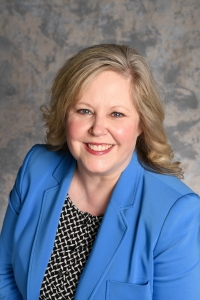Oncology Pharmacists Help Cancer Patients Navigate Treatment
If you are a cancer patient receiving chemotherapy, do you know everyone on your care team? You probably know your medical oncologist well, and the nurse(s) in the infusion center. Perhaps you’re on a first name basis with the reception desk personnel and the technician who draws your blood. You may have met with a social worker or patient navigator. But there is an important person on your care team whom you may not have met: your oncology pharmacist.
Oncology pharmacists are medication experts with the training and experience to help cancer patients navigate their treatment. They are an integral part of a cancer patient’s care team that includes surgeons, medical oncologists/hematologists, radiation oncologists, nurses, physician assistants, and nurse practitioners.
Oncology pharmacists work in hospitals, outpatient cancer clinics, infusion centers, and specialty pharmacies. They carefully prepare cancer medications to ensure they are safe, given at the right dose, and will produce the best outcome. They help patients understand how those medicines work and know of ways to minimize medication side effects. They also work closely with patients and their care team to make sure that other medicines, vitamins, or herbal supplements won’t lower the efficacy of their cancer medications, or vice versa.
“Thanks to advances in science and medicine, people with cancer are living longer than ever,” said Heidi Finnes, PharmD, BCOP, FHOPA, past president of the Hematology/Oncology Pharmacy Association (HOPA), senior manager of Pharmacy Cancer Research at the Mayo Clinic Cancer Center, and assistant professor of Pharmacy at Mayo Clinic College of Medicine. “As a result, patients are often taking multiple medications to treat conditions like high blood pressure or diabetes. I encourage patients to share a list of their current medications with their oncology pharmacist and let them know before taking any new pills, even those purchased over the counter.”
Complying with Cancer Medication Instructions
Many patients receive cancer treatments in the hospital, a doctor’s office, or an infusion center, where nurses administer chemotherapy intravenously. Others take oral chemotherapy at home.
An oncology pharmacist can teach patients the best way to store their oral chemotherapy medicines at home and how to take the medicines. Dr. Finnes suggested that patients talk with their oncology pharmacist about what they eat and drink to make sure food and beverages don’t keep medicines from working.
“Some medicines will work better if your stomach is empty, while others work better if you eat food when you take them,” Dr. Finnes said. “And some foods should not be eaten at the same time as taking the medicine.”
According to Dr. Finnes, when oncology pharmacists are closely involved in patients’ at-home care, patients adhere more closely to medication protocols and can stay on oral chemotherapy longer. When side effects are identified earlier, it allows pharmacists to adjust medication doses if needed.
“Sometimes patients with side effects like diarrhea think they have to ‘tough it out,’ but their pharmacist can help them avoid or lessen those side effects so that the patients can stay on their medication,” she said.
HOPA is currently studying various pharmacist interventions for patients taking oral cancer agents and plans to announce results soon.
Addressing Treatment Barriers
Oncology drugs are expensive, and newer therapies like CAR-T and immunotherapy can be difficult to access. Oncology pharmacists can help patients access medication therapies and find ways to save patients money on the cancer medications they take.
“Many newer therapies are only available by participating in a clinical trial,” Dr. Finnes explained. “Oncology pharmacists can identify available clinical trials, help patients fill out required paperwork and consent forms, educate patients on the risks involved in clinical trials, and make sure the patient adheres to trial requirements.”
In instances where patients don’t meet the criteria for a clinical trial, Dr. Finnes has helped patients get access to the medication through a single-patient investigational new drug (IND) process, giving the patient permission from the trial sponsor and FDA to take the medication under strict protocols.
Oncology pharmacists also can help alleviate the burden of patients’ out-of-pocket costs by identifying opportunities for financial assistance through patient assistance programs (PAPs) available through drug companies or through charitable foundations such as the HealthWell Foundation. Some PAPs provide grants for medications, while others provide financial assistance for transportation, lodging and food related to cancer treatment.
“HOPA is especially passionate about oral chemo parity,” Dr. Finnes said. “Copays for oral cancer drugs can be very expensive because they are billed through prescription coverage, whereas IV medications are billed through medical coverage. We are lobbying to make sure that, if no IV equivalent for an oral chemo agent exists, the out-of-pocket costs will be the same.”
HOPA also is working to offer more control and autonomy to oncology patients through initiatives such as telehealth visits, education on home infusion, and monitoring patients at home with wearable tech to track vital signs.
“We want to help bring oncology treatments to the patient rather than always requiring the patient to come to a treatment center or to an academic medical center for a clinical trial,” Dr. Finnes concluded. “Especially for patients who have active lives, children and/or careers; it’s important to be able to meet patients halfway.”

















